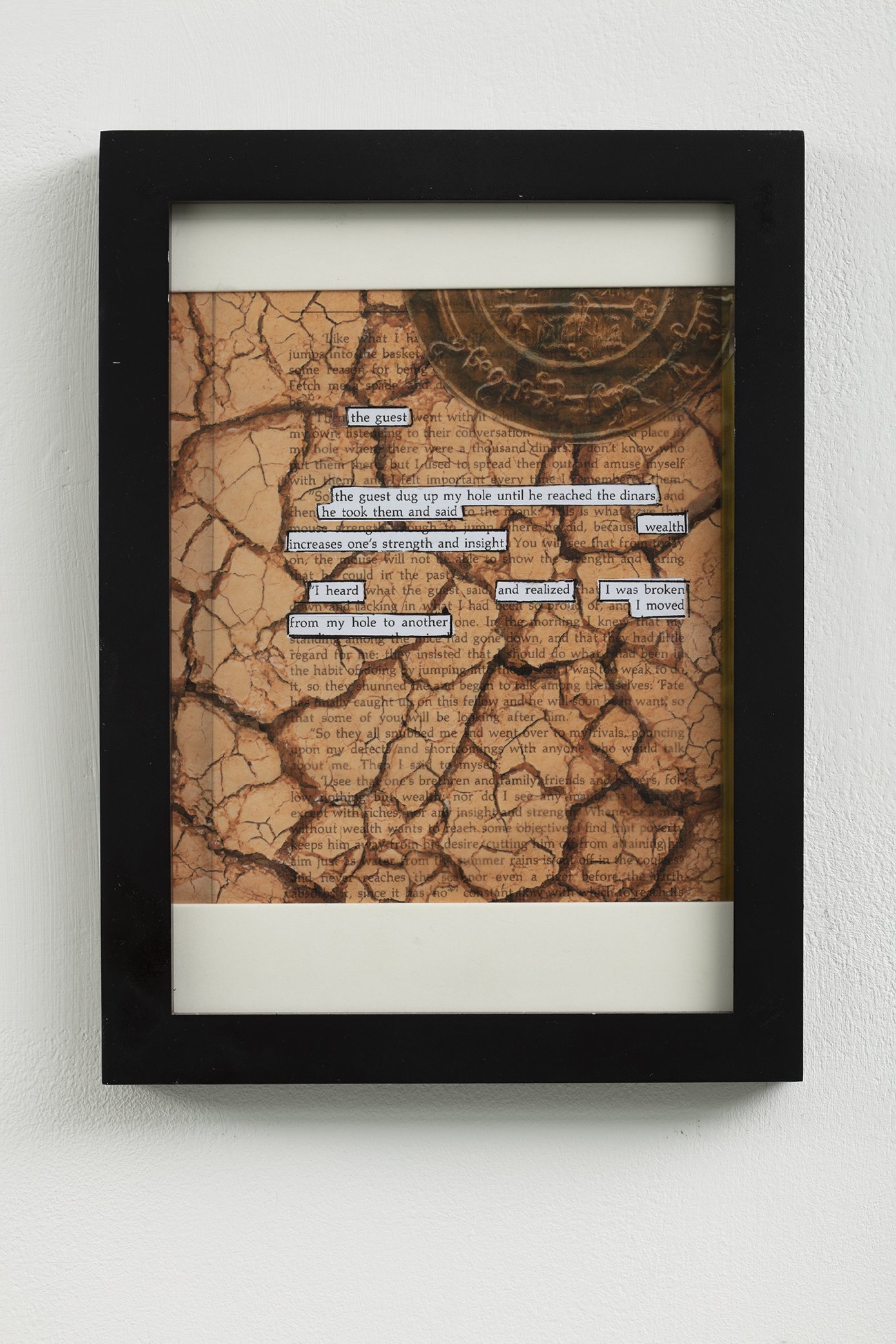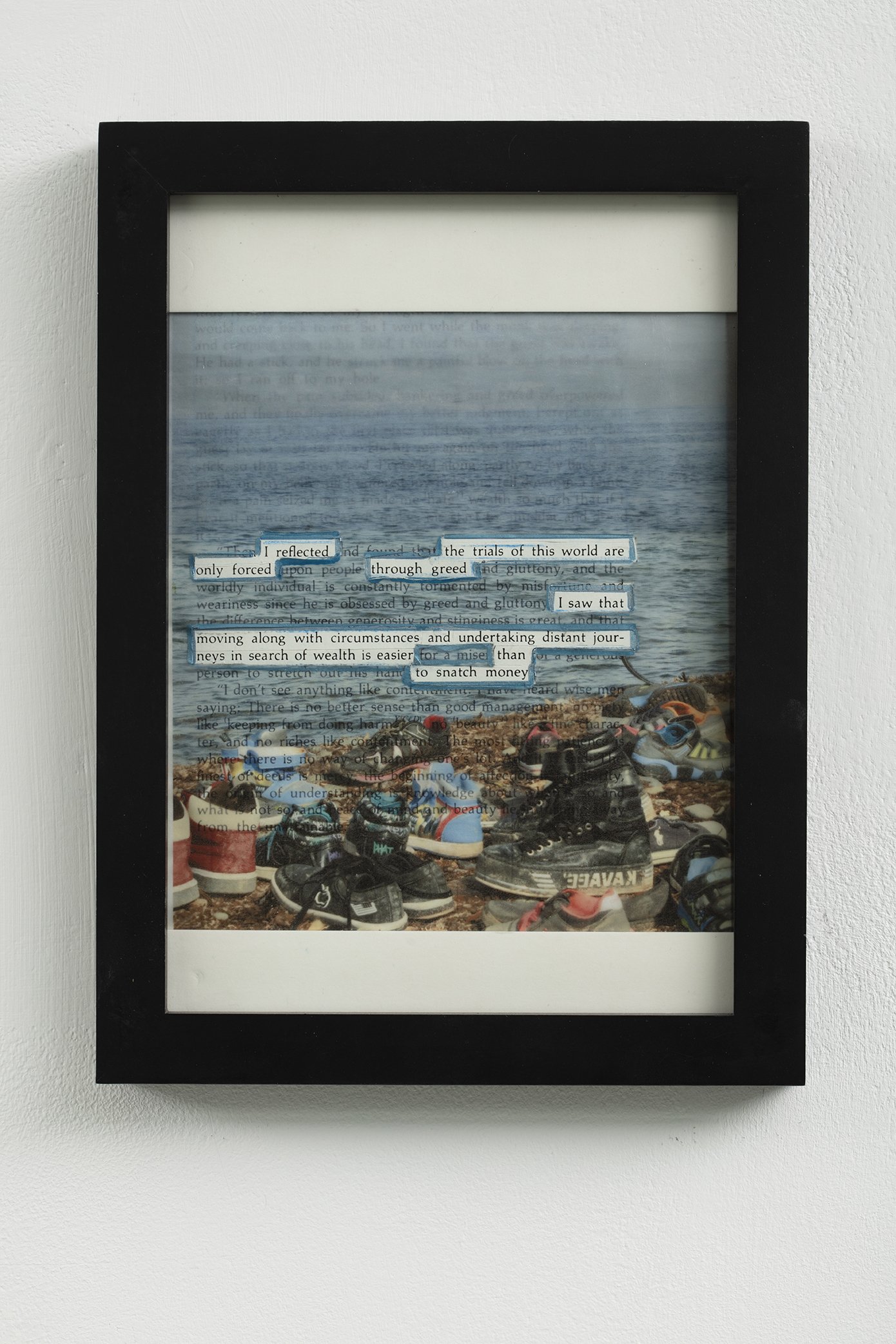Kalila wa Dimna: Ancient Tales for Troubled Times
Poverty, Migration and the Consolation of Friendship
The Kalila Wa Dimna fables are understood to have been written in the eighth century, in Sanskrit. The fables circulated amongst medieval courts employing storytelling to direct court rulers on how to govern. In the exhibition entitled Kalila wa Dimna: Ancient Tales for Troubled Times, scholars and artists were invited to reinterpret the ‘Tale of the Four Friends’ for contemporary audiences.
These four panels focus on the mouse’s narrative in the fable, ‘The Four Friends’. The panels are an example of ‘found poetry’, a form which works from existing texts and uses collage in order to create or shift meaning. By superimposing images from contemporary migratory scenes onto the mouse’s words, the panels enable a dialogue between the mouse’s impoverishment and the predicament of forced migration due to poverty.
The voiceover reads from a report conducted by the United Nations International Organisation for Migration (IOM, 2020). Both the medieval fable and the IOM report are intended to direct governance. The fable presents us with a personal and emotional description of how poverty feels. The IOM report is impersonal and presents us with the economic impact of migration on both migrant and host. By juxtaposing these two approaches to poverty and their relation to migration, we experience how these modes might work together.
Click here for the voiceover and listen as you look at each panel.




Listen to Jean discuss the Kalila wa Dimna fable 'The Four Friends' with Dr. Rachel Scott and curator Rania Mneimneh.